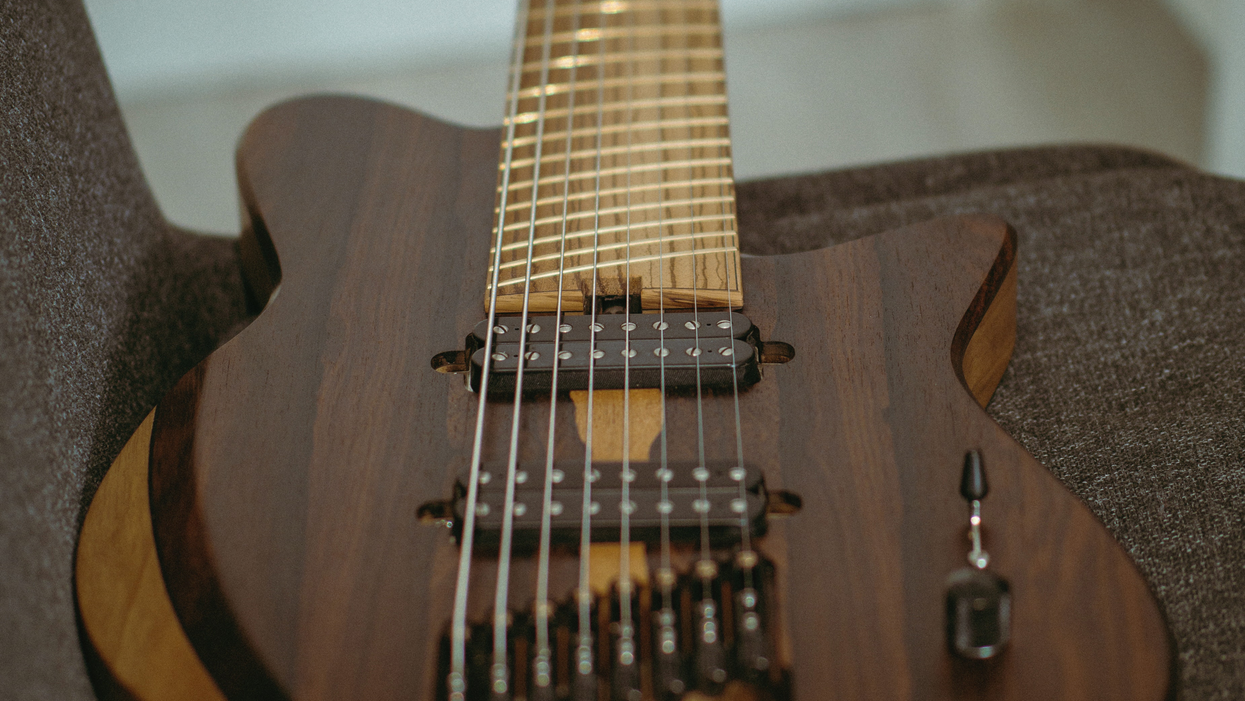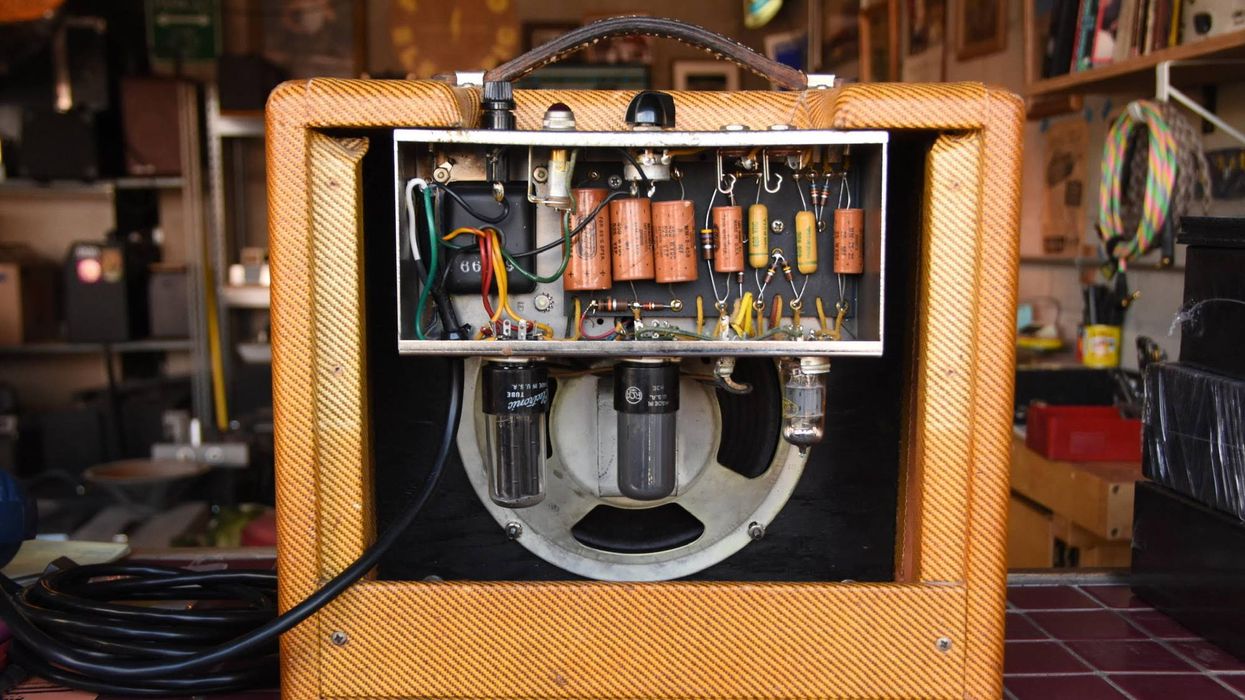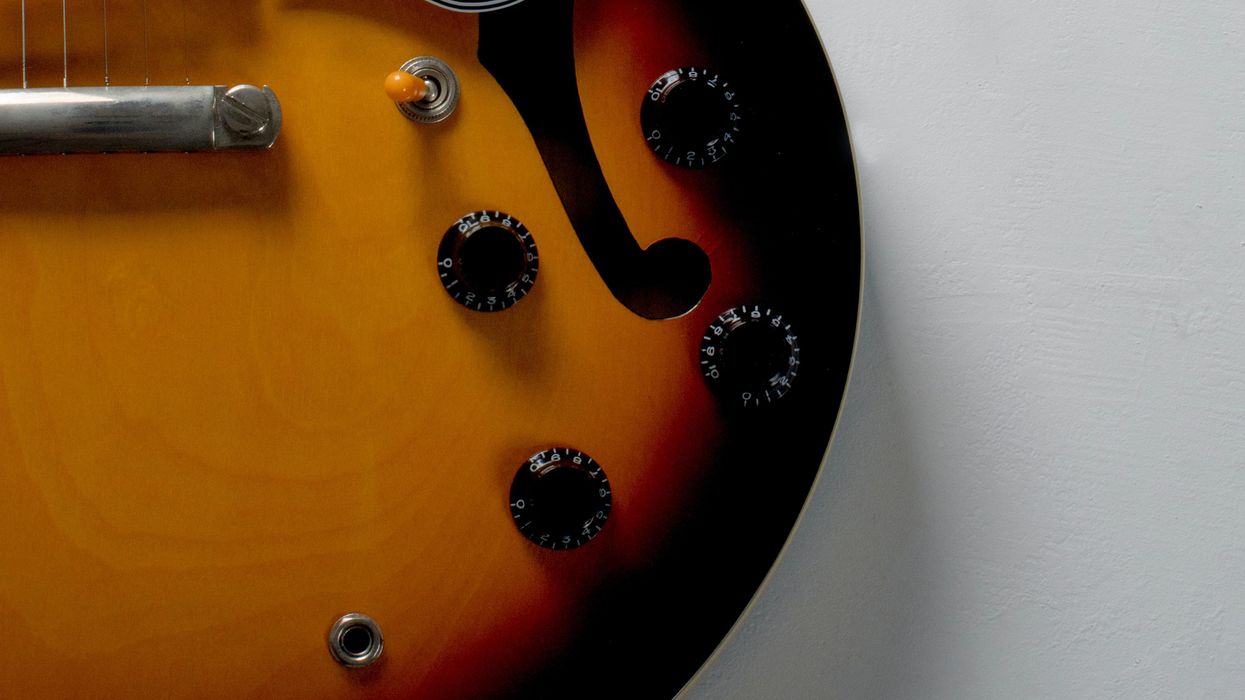Advanced
Intermediate
·Develop a deeper sense of subdivisions.
·Learn how to combine odd groupings.
·Perfect the “Yngwie” pattern.
I had the pleasure of taking part in a project a couple of years back breaking down Steve Vai’s playing on David Lee Roth’s Eat Em and Smile album. Safe to say my fingers were fried after three months of practicing, but there were so many creative ideas to learn from. Late ’80s and early ’90s Vai is really something to behold, as he was featured in huge bands and changed the face of instrumental guitar. I want to look at some technical aspects of what he would do in terms of linear lines and expressions. My hope is that by learning them, you can take them and make them your own. Let’s dive in!
Ex. 1 is a classic Vai-ism in D minor. It’s a descending line loosely based around a series of triads with a few extra bits put in. The first beat centers on a D minor triad (D–F–A), the second beat hovers around a B diminished triad (B–D–F), and the third beat uses an A minor triad (A–C–E) to give a V-I pull back to the root note on beat 4. I love the idea of the two-note pull-off followed by a slide to transition between the cells.
Ex. 2 is similar to Ex. 1 in terms of layout, however there are a few twists. Most notably with the two-note-per-string hammer-ons shifting down two positions. This legato “smear” of notes is a trademark Vai-ism that pops up in tons of his solos and improvisations. We finish the line with a huge position shift down to a G Minor pentatonic pull-off phrase. A notable ornament of Vai’s spectacular playing.
Vai and Joe Satriani share a lot of common ground in terms of legato playing. They are known for taking three-note-per-string phrases and cramming notes into the beat for a cool washy sound. However, Vai sometimes would really focus on the odd subdivisions that these patterns would create. A sure sign of the influence Allan Holdsworth had with his angular-sounding lines. In Ex. 3 you can see how I would approach this by combining sextuplets with septuplets.
Ex. 4 is another legato run in E minor. However, this time we’re adding a tapped note at the 12th fret on each string at the top of each legato “roll.” Don’t be alarmed by the subdivisions in the transcription, these are more of a “pointer” towards the groupings. My performance note would be to practice this slowly as eighth-notes or slow 16th-notes before speeding up. Then when things are ticking along well, just go for it!
This phrase (Ex. 5) opens with a rather unique sequence for Vai: a five-note pattern played over a 16th-note rhythm. You can hear this pattern on some of his Alcatrazz material, and within the tapping runs in solos such as “Big Trouble.” The quintuplet uses notes from A minor pentatonic (A–C–D–E–G) spread out over two positions. Each pattern starts with a tapped note before pulling off to a chord tone. Then, I skip a string and play a descending three-note group. I continue this up to the top string before descending a line based around an Fmaj9 arpeggio (F–A–C–E–G).
Vai has some ferocious picking runs and when I hear Guthrie Govan go into full-on shred mode I can most notably hear the Vai influence on him. Ex. 6 features an ascending run of sextuplets in A minor. This phrase features mostly ascending notes on each string until the last two beats where we run into an Al Di Meola/Paul Gilbert-style pattern.
Ex. 7 is a flurry of notes, however there is some sense to how they are played. Keep in mind that this is phrased with three-note-per-string patterns. If we dissect the fingerings a bit, I use the classic “Yngwie” pattern of six to kick things off and then I use three groups of seven before wrapping with three groups of five. Don’t think of these in relationship to the beat, but more for just “building” the run. Practice with even 16ths or eighth-notes at first. When it comes to playing it at full speed, pick like the wind!
These unusual, almost symmetrical, patterns turn up in all kinds of places in Vai’s playing. Ex. 8 is a fun Vai phrase that outlines a series of minor 11 arpeggios. Each pattern is identical, so it’s best to play this with sweep picking and aim for an even feel. Try saying the word “hippopotamus” when playing through quintuplets to line up the syllables with the subdivisions. When Vai plays these, he lets them blur slightly, turning them into sheets of sound. Or sometimes he uses them to simply highlight the top note by sweeping so fast that it’s almost inaudible—in a cool way!
So there we have it, eight technical linear lines inspired by the amazing Steve Vai. Learning lines from your favorite artists is good, but it really starts to count when you take away the concepts and re-shape them your own way. Vai is a well of inspiration for tons of guitarists. Long may he continue!











![Rig Rundown: Russian Circles’ Mike Sullivan [2025]](https://www.premierguitar.com/media-library/youtube.jpg?id=62303631&width=1245&height=700&quality=70&coordinates=0%2C0%2C0%2C0)






